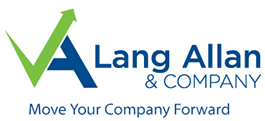Financial reporting is a critical component for the successful operation of any organization. The financial information presented must be accurate and free from any misstatements or fraud. Implementing and maintaining adequate internal controls over financial reporting plays a pivotal role in ensuring the integrity of financial data. This article delves into the significance of internal controls and the steps to implement and maintain them effectively.
“Through a systematic approach, organizations can protect their assets, ensure the reliability of financial reporting, and ultimately gain the confidence of stakeholders,” says Adam Allan, CPA and managing partner of Lang Allan & Company, P.C.
He adds, “Implementing and maintaining robust internal controls are not just about compliance; it is an investment in the long-term health and sustainability of your organization.”
Understanding Internal Controls
Internal controls are policies, procedures, and mechanisms put in place to ensure the reliability and accuracy of financial reports and safeguard assets. They are designed to prevent or detect errors, misstatements, and fraud. Internal controls are necessary for compliance with laws and regulations, and they also contribute to operational efficiency and effectiveness.
Steps to Implement Internal Controls
Risk Assessment
Begin by conducting a thorough risk assessment to identify areas where your organization is susceptible to financial misstatements or fraud. Consider both internal and external factors, and assess the likelihood and potential impact of each risk.
Establish Policies and Procedures
Develop detailed policies and procedures to address the risks identified. These should encompass authorization controls, documentation requirements, and segregation of duties. For example, requiring dual signatures on checks or having different employees responsible for authorizing and processing transactions can minimize the risk of fraud.
Develop a Control Environment
The control environment sets the tone for an organization and influences the consciousness of its employees. It includes the integrity, ethical values, and competence of the company’s personnel. Top management should demonstrate a commitment to integrity and ethical values, ensuring that these expectations are communicated and understood at all levels.
Information and Communication
Ensure that pertinent information is identified, captured, and communicated promptly. Employees should have a clear understanding of their roles and responsibilities regarding internal controls. Establish open communication channels for reporting any irregularities or concerns.
Monitoring Activities
Ongoing monitoring is essential in assessing the effectiveness of internal controls. Implement tools such as internal audits, reviews of financial reports, and reconciliations to evaluate control performance. Regularly assess the need for changes in controls in response to changes in the organization and its environment.
Maintaining Internal Controls
Continual Training
Provide regular training to employees on internal controls, ensuring that they are updated on new regulations, and understand the importance of controls in mitigating risks.
Periodic Reviews and Updates
Internal controls should not be static. Conduct periodic reviews to assess whether they are still relevant and effective. Update them as necessary, especially when there are significant changes in the business environment or operations.
Encourage Whistleblowing
Establish a confidential reporting mechanism that allows employees to report suspected fraud or control weaknesses without fear of reprisal.
By committing to a culture of integrity and a systematic approach to risk management, you safeguard not just your financial reporting but the very reputation of your organization. Give us a call if you need help implementing internal controls at your company.
You Might Also Like
